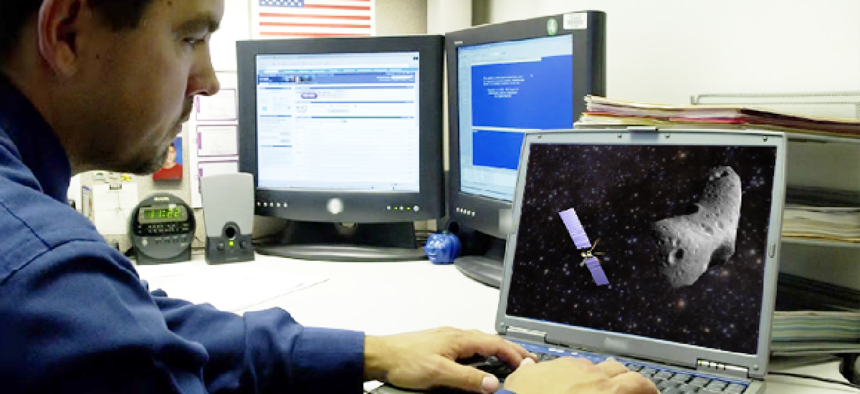NASA crowdsources asteroid hunt with desktop app


Connecting state and local government leaders
A program developed during a NASA software challenge lets amateur astronomers identify new asteroids with a desktop computer.
NASA is making it possible for citizen scientists to pursue their interests in space exploration and observation while assisting NASA in the hunt for undiscovered asteroids.
During a panel Sunday at the South by Southwest festival in Austin, the space agency announced the release of a new desktop application that lets amateur astronomers analyze images of potential new asteroids.
Developed with Planetary Resources Inc., of Redmond, Wash., the application is based on an algorithm developed for the Asteroid Data Hunter program that analyzes images for potential asteroids. Asteroid Data Hunter challenge, part of NASA’s Asteroid Grand Challenge, was announced at last year’s SXSW festival and offered awards to individuals for developing algorithms that would help identify asteroids in images captured by ground-based telescopes.
“The Asteroid Data Hunter challenge has been successful beyond our hopes, creating something that makes a tangible difference to asteroid hunting astronomers and highlights the possibility for more people to play a role in protecting our planet,” said NASA’s Asteroid Grand Challenge program executive Jason Kessler.
The newly developed algorithm enables NASA astronomers to discontinue the verification of asteroid detection by hand, “an increasingly futile process as volumes of emerging data are making this impossible.”
Instead, the algorithm gives astronomers the ability to use computers to rapidly check the images and determine which objects are suitable for follow up, which leads to finding more asteroids than previously possible.
Asteroids are traditionally discovered through image analysis – pictures are taken of the same portion of the sky and examined for objects that have moved between frames.
With the free desktop application, amateur astronomers can analyze images from their telescopes using a basic desktop or laptop computer. If there is not a matching asteroid record already on file for their discovery, the program provides a way to report findings to the Minor Planet Center where they can be confirmed and archived.
The identification of asteroids and other near-Earth objects is an important undertaking, which includes locating “potentially hazardous asteroids and identifying those viable for redirection to a stable lunar orbit for future exploration by astronauts,” according to NASA.
“The beauty of such archives is that the data doesn't grow stale, and with novel approaches, techniques and algorithms, they can be harvested for new information,” said Jose Luis Galache of NASA’s Minor Planet Center. Participants in the challenge did just that, he added, “probing observations of the night sky for new asteroids that might have slipped through the software cracks the first time the images were analyzed.”
NEXT STORY: HHS opens research pubs, grant data




